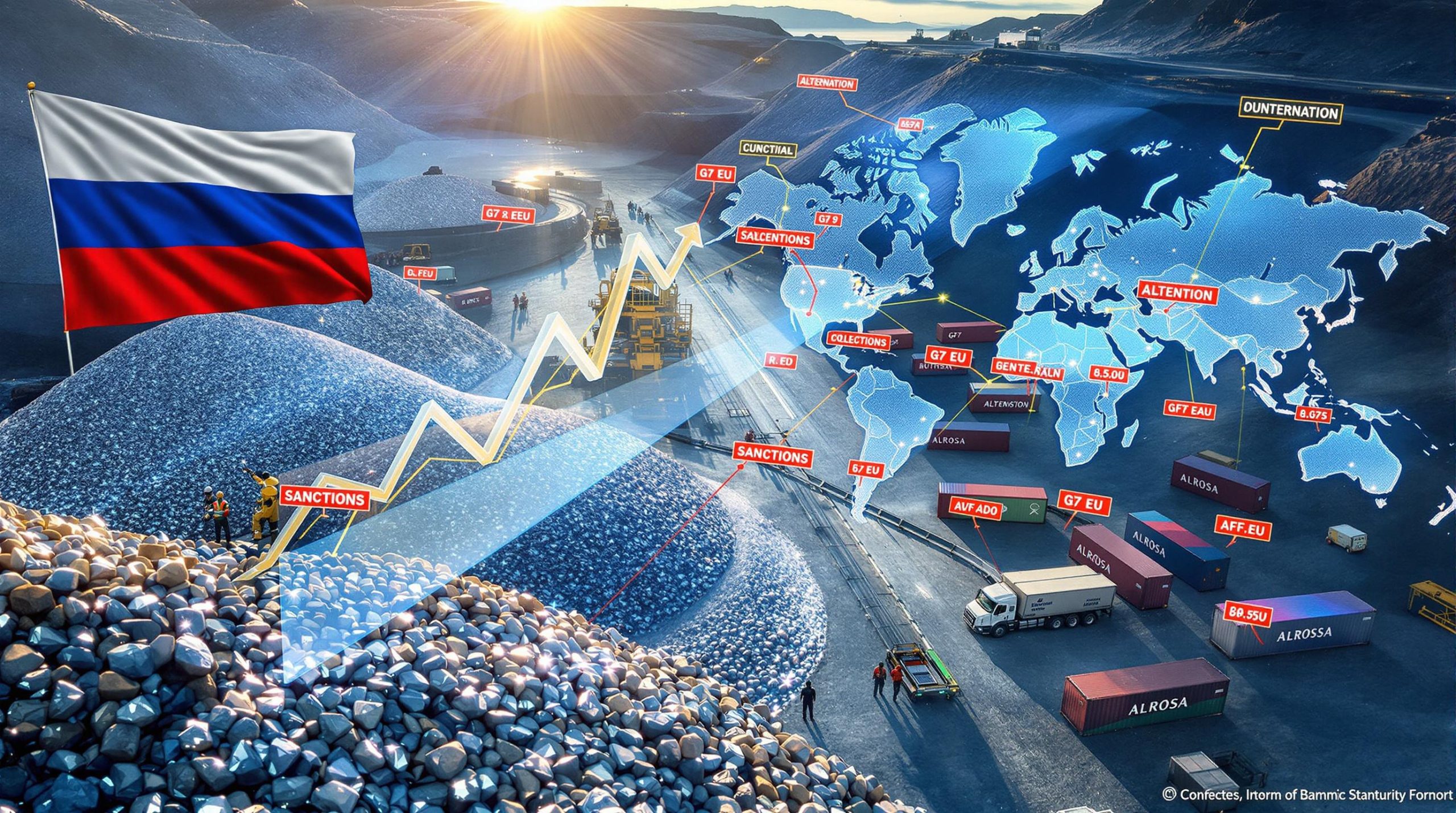Why Are Rare Earths Stocks Surging After Pentagon's Strategic Investment?
The U.S. Pentagon's recent acquisition of a 15% stake in MP Materials, a Las Vegas-based rare earth elements (REE) mining company, for $600 million has sent shockwaves through the mining sector. This strategic investment represents a decisive shift from rhetoric to action in Washington's approach to securing domestic supply chains for critical minerals, with immediate impacts rippling through global markets.
The investment signals a fundamental change in how the U.S. government addresses mineral security – moving beyond policy statements to direct financial participation in strategic resource companies. This approach demonstrates a heightened commitment to reducing dependency on foreign suppliers, particularly China, for materials essential to national security and technological advancement.
The Pentagon's Strategic Move Explained
The $600 million investment in MP Materials marks a watershed moment in U.S. strategic minerals policy. Rather than relying solely on incentives and regulatory frameworks, the Pentagon has taken a direct ownership position in a domestic rare earths producer, underlining the critical importance of these materials to national security infrastructure.
This move aligns with broader initiatives under the Defense Production Act, which authorizes federal intervention to secure supply chains for materials deemed essential for national defense. The substantial financial commitment suggests rare earths have been elevated to the highest tier of strategic priorities.
"It's ultimately a show of support from the Pentagon to actively participate in the mission to secure domestic supply chain security," noted market analysts following the announcement.
The investment focuses not just on mining capacity but on developing complete value chains within U.S. borders – from extraction through processing to manufacturing of components for defense applications.
Market Response to the Investment
The market reaction was immediate and substantial across multiple commodities and company stocks:
- Molybdenum futures on the London Metal Exchange surged an extraordinary 16.7% in a single trading session
- Monthly growth in molybdenum prices reached 6.4% despite experiencing a late June dip
- Trading volumes across rare earth stocks increased by multiples of their 30-day averages
The investment sparked a sector-wide reassessment, with investors recognizing the potential for similar strategic moves by the U.S. and allied governments in other critical mineral companies.
Which ASX Rare Earths Stocks Benefited From the Pentagon's Move?
The Pentagon's investment triggered substantial gains across Australian rare earths companies, with particular strength in producers and advanced developers. The ASX, home to some of the world's most significant rare earths companies outside China, saw exceptional trading activity as investors anticipated potential similar strategic investments from either the U.S. government or possibly from Canberra itself.
Major ASX Rare Earths Stock Movements
The impact on ASX-listed rare earths companies was profound, with stocks experiencing significant price appreciation:
| Company | ASX Code | Price Change | Trading Price |
|---|---|---|---|
| Iluka Resources | ILU | Significant gain | $5.03 per share |
| Lynas Rare Earths | LYC | +17.6% | $9.75 per share |
| Brazilian Rare Earths | BRE | +8.10% | $2.54 per share |
| Viridis Mining | VMM | +13.64% | 63 cents per share |
| Arafura Rare Earths | ARU | +6.9% | 19 cents per share |
These price movements reflect growing investor confidence in the rare earths sector, particularly for companies with established operations or advanced development projects in politically stable jurisdictions.
Lynas Rare Earths, as the world's largest producer outside China, saw the most dramatic share price increase, reflecting its established operations and processing capabilities. Meanwhile, earlier-stage companies like Arafura also benefited significantly, demonstrating the market's expectation that strategic investment interest could extend beyond established producers to promising developers.
What Drove Investor Interest
Several factors contributed to the surge in ASX rare earths stocks:
- Strategic parallels: Companies with similar profiles to MP Materials attracted particular interest
- Processing capabilities: Firms with existing or planned separation facilities saw heightened attention
- Project readiness: Advanced-stage projects with near-term production potential gained the most
- Political geography: Australian companies benefited from the country's status as a trusted U.S. ally
Trading volumes indicated this wasn't merely speculative day trading but potentially included institutional accumulation, suggesting longer-term strategic positioning by professional investors.
What Makes Rare Earth Elements Strategically Important?
Rare earth elements comprise a group of 17 metallic elements that, despite their name, are relatively abundant in the Earth's crust. Their strategic importance stems not from scarcity but from their unique properties and the challenges associated with their extraction and processing.
Critical Applications of Rare Earth Elements
These elements have become indispensable across multiple sectors critical to both civilian economies and critical minerals & energy security:
-
Defense Technologies: Rare earths are essential components in missile guidance systems, radar equipment, electronic warfare platforms, and communication devices. Neodymium-iron-boron magnets power motors in guided munitions, while samarium-cobalt magnets function in precision weapons systems.
-
Renewable Energy: Wind turbines rely heavily on neodymium, praseodymium, and dysprosium for their permanent magnets, with a single large turbine requiring up to 600kg of rare earth elements.
-
Electric Vehicles: Modern EV motors typically contain 1-2kg of rare earth elements, primarily in their permanent magnets, making these minerals critical to transportation electrification goals.
-
Consumer Electronics: Smartphones, computers, and other personal devices utilize rare earths for everything from vibration motors to speakers and display technologies.
-
Medical Equipment: MRI machines rely on rare earth magnets, while specialized diagnostic tools use phosphors containing europium, terbium, and other rare earth elements.
Supply Chain Vulnerabilities
The rare earths supply chain faces several critical vulnerabilities that contribute to their strategic importance:
- China controls approximately 85% of global processing capacity, creating a bottleneck that affects all downstream industries
- Limited production outside China creates strategic dependencies for Western defense industries
- Processing rare earths requires specialized facilities and expertise that take years to develop
- Environmental challenges associated with extraction and processing have historically limited development in Western nations
- The complex separation process for individual rare earth elements creates technical barriers to market entry
These vulnerabilities have transformed what might otherwise be ordinary commodities into materials of geopolitical significance, prompting governments to take extraordinary measures to secure supply chains.
How Does the U.S. Government's Strategy Compare to China's Dominance?
The Pentagon's investment represents part of a broader U.S. strategy to counter China's dominance in the rare earths sector, which has evolved systematically over several decades.
China's Rare Earths Advantage
China's commanding position in rare earths wasn't accidental but resulted from deliberate, long-term strategic planning:
- Strategic foresight: Beginning in the 1980s, China recognized rare earths' future importance and designated them a protected strategic resource
- Vertical integration: The country built capabilities across the entire supply chain from mining through processing to manufacturing
- Regulatory advantages: Less stringent environmental regulations historically provided cost advantages over Western producers
- Export controls: China has demonstrated willingness to use rare earths as geopolitical leverage, most notably during a 2010 dispute with Japan
- State support: Government subsidies, research funding, and preferential policies have sustained domestic rare earths companies
This coordinated approach gave China unparalleled control over materials essential to modern technology, creating strategic vulnerabilities for other nations.
U.S. Counter-Strategy Elements
The U.S. approach to breaking China's rare earths dominance now includes multiple complementary elements:
- Direct investments: The Pentagon's $600 million stake in MP Materials represents the most significant direct investment to date
- International partnerships: Collaborations with Australia, Canada, and other allies to develop alternative supply chains
- Research funding: Programs to develop substitutes and improve recycling technologies
- Defense Production Act: Title III authorities enable preferential purchasing and financial support for domestic producers
- Tax incentives: Credits for domestic production and processing facilities
- Regulatory streamlining: Expedited permitting for projects deemed strategically important
The Pentagon's investment signals a shift from a market-led approach to a more interventionist strategy that recognizes the limitations of private capital in addressing national security concerns in critical mineral supply chains.
What Could This Mean for Australia's Rare Earths Industry?
Australia stands to benefit significantly from increased Western interest in securing rare earths supply chains outside of China, potentially becoming a critical node in a reconfigured global rare earths network.
Australia's Strategic Position
Australia possesses several competitive advantages in the evolving mining trends:
- Resource abundance: The country holds the world's third-largest reserves of rare earth elements, according to the U.S. Geological Survey
- Political stability: A mature legal system and stable government make Australia attractive for long-term investments
- Technical expertise: Established mining sector with world-class capabilities in extraction and processing
- Strategic alignment: Strong security relationships with the United States and other Western nations
- Processing investments: Lynas Rare Earths operates the only significant rare earths separation facility outside China
These factors position Australia as a natural partner in Western efforts to develop alternative supply chains, with potential for accelerated investment from both public and private sources.
Potential Government Support Mechanisms
Investors are speculating about potential Australia's strategic reserve to capitalize on this strategic opportunity:
- Critical Minerals Strategy: Expansion of existing programs targeting rare earths development
- Co-investment models: Government equity participation in strategic projects
- Infrastructure support: Funding for shared processing facilities
- R&D incentives: Enhanced tax benefits for rare earths technology development
- Defense supply agreements: Long-term purchasing commitments from Australian Defense Forces
The Pentagon's direct investment approach may provide a template for similar Australian government actions, particularly as competition for secure rare earths supplies intensifies.
How Might Investors Approach Rare Earths Stocks?
The Pentagon's investment has created renewed interest in rare earths stocks, but investors should consider several factors before making investment decisions in this volatile sector.
Key Investment Considerations
When evaluating rare earths companies, several critical factors can help distinguish potential winners:
-
Project Stage: Companies with producing assets generally carry lower execution risk than exploration projects, though may offer less upside potential. The timeline from discovery to production typically spans 7-10 years, with numerous technical and regulatory hurdles.
-
Processing Capabilities: Companies that control or are developing processing facilities hold particular strategic value, as separation technology represents the most significant bottleneck in the supply chain.
-
Specific Rare Earths Profile: Not all rare earths are equally valuable or strategic. Projects rich in heavy rare earths (particularly dysprosium and terbium) or with favorable distributions of magnet materials (neodymium and praseodymium) typically command premium valuations.
-
Geopolitical Positioning: Operations in politically stable jurisdictions aligned with Western interests offer strategic advantages for securing government support and investment.
-
Environmental Credentials: Companies developing more sustainable extraction and processing methods may gain regulatory advantages and broader market acceptance.
Potential Catalysts for Further Growth
Several factors could drive continued growth in the sector beyond the Pentagon's initial investment:
- Additional government investments: Further strategic stakes by the U.S. or allied governments
- New legislation: Enhanced support mechanisms from Congress or parliaments of allied nations
- Supply disruptions: Potential export restrictions from dominant producers
- Technology adoption: Accelerated deployment of electric vehicles and renewable energy
- Defense procurement: Increased military spending on systems requiring rare earth components
Investors should monitor developments in these areas as potential signals for sector momentum, while recognizing the inherent volatility of strategic resource markets.
What Are the Environmental Considerations in Rare Earths Production?
While strategically vital, rare earths production presents significant environmental challenges that companies and governments must address to ensure sustainable development of these critical resources.
Environmental Challenges
The extraction and processing of rare earth elements involve several substantial environmental considerations:
- Radioactivity management: Many rare earth deposits contain naturally occurring thorium and uranium, requiring specialized handling and disposal protocols
- Water impacts: Processing typically uses significant water volumes and produces waste streams that require careful management
- Chemical usage: Separation processes employ various acids, bases, and solvents that must be properly contained
- Energy intensity: Processing operations consume substantial energy, with associated carbon footprint implications
- Land disturbance: Mining operations can impact significant land areas, particularly for low-concentration deposits
These factors have historically limited rare earths development in jurisdictions with stringent environmental regulations, contributing to China's dominance.
Sustainable Approaches Emerging
Leading companies are developing more environmentally responsible approaches to rare earths production:
- Closed-loop water systems: Advanced water recycling to minimize consumption and discharge
- Renewable energy: Integration of solar and wind power to reduce carbon intensity of processing
- Byproduct recovery: Capturing thorium and uranium for safe storage or potential future use
- Rehabilitation planning: Comprehensive mine closure and remediation strategies
- Alternative processing: Research into bioleaching and other less chemically intensive separation methods
These innovations may help address the environmental challenges that have constrained Western rare earths development, potentially enabling more geographically diverse production.
FAQ: Rare Earths Investments and Strategic Importance
What exactly are rare earth elements?
Rare earth elements comprise 17 metallic elements on the periodic table, including the 15 lanthanides plus scandium and yttrium. Despite their name, most are relatively abundant in the Earth's crust but rarely found in concentrated, economically viable deposits.
Why is China dominant in rare earths production?
China's dominance stems from decades of strategic investment, less stringent environmental regulations historically, government subsidies, and development of technical expertise in processing these complex minerals.
Are there alternatives to rare earth elements?
Research is ongoing into alternatives for some applications, but rare earths' unique properties make them difficult to replace in many high-performance applications, particularly in defense technologies and permanent magnets.
How long does it take to develop a new rare earths mine?
Developing a new rare earths project typically takes 7-10 years from discovery to production, with processing facilities requiring additional time and investment to establish.
What role does recycling play in rare earths supply?
Currently, less than 1% of rare earths are recycled due to technical challenges and economic factors, but recycling represents a growing opportunity as technologies improve and material prices increase.
Further Exploration
Rare earth elements will likely remain at the intersection of geopolitics, technology development, and investment opportunity for years to come. As governments increasingly view these materials through a national security lens, the market dynamics may continue to evolve in ways that create both risks and opportunities for companies in the sector.
The Pentagon's strategic investment may mark the beginning of a new era in Western approaches to critical minerals, with implications extending far beyond the immediate market reaction to fundamentally reshape global supply chains for these essential materials. Trump's Critical Minerals Order and US mineral production policy have further underscored the growing importance of securing domestic supply of these vital resources for national security and industrial priorities.
Want to Discover the Next Major Mineral Opportunity?
Stay ahead of the market with real-time alerts on significant ASX mineral discoveries through Discovery Alert's proprietary Discovery IQ model. Explore why historic discoveries generate substantial returns by visiting the dedicated discoveries page and begin your 30-day free trial today.




